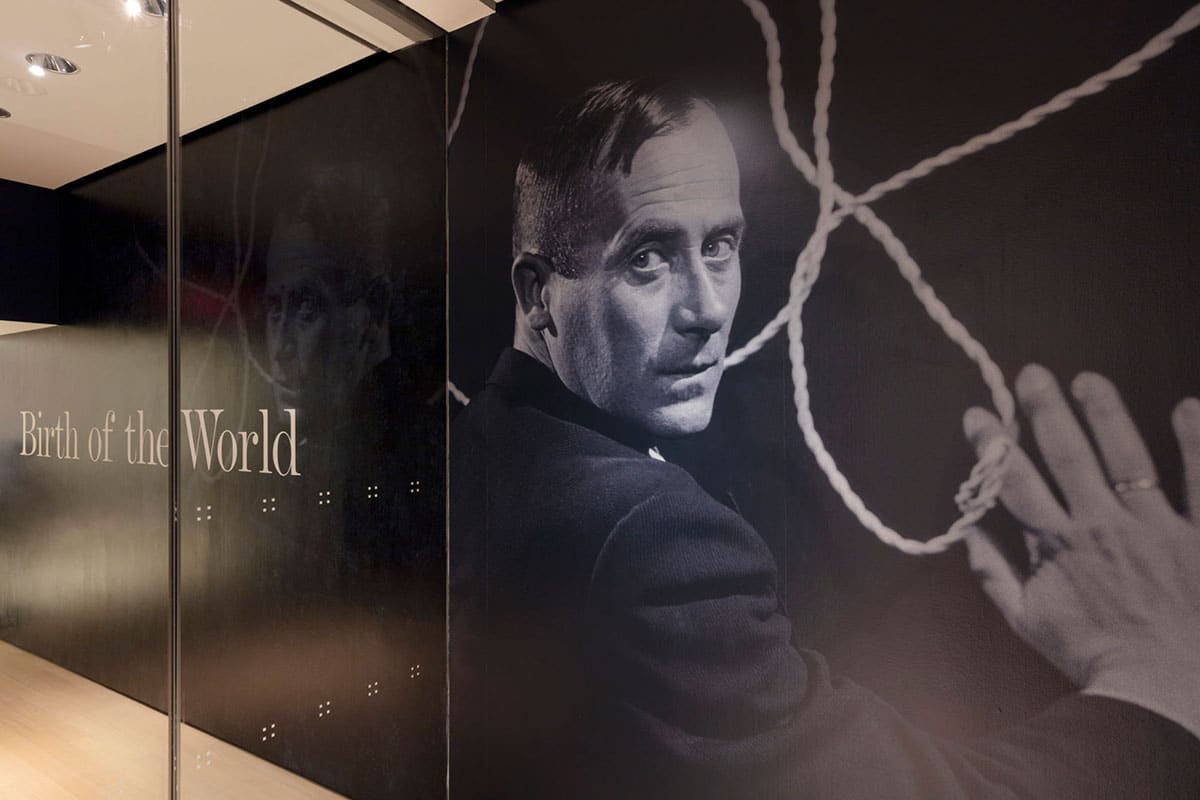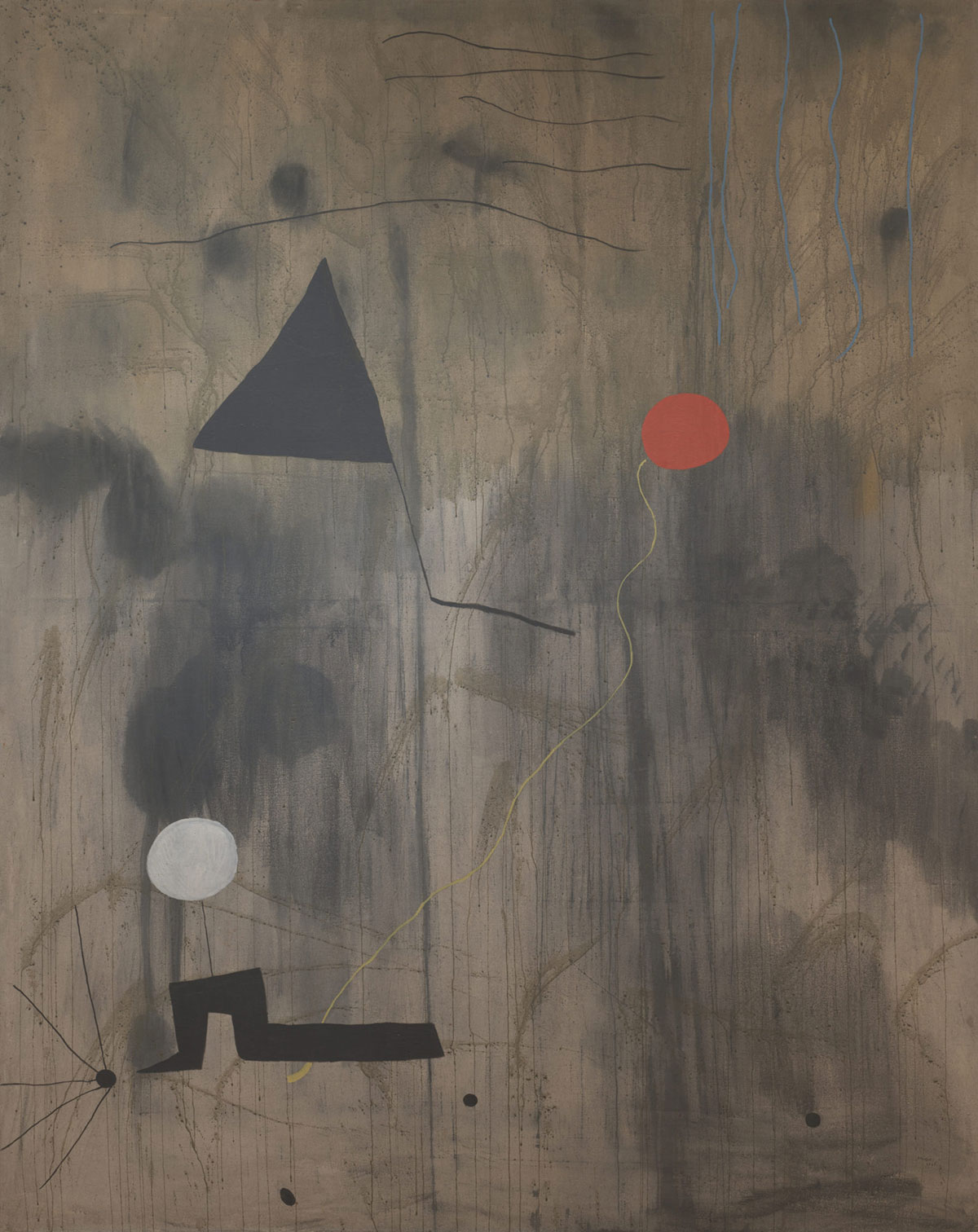Joan Miró: Birth of the World is at MoMA, the Museum of Modern Art in Midtown, Manhattan, daily from February 24 – June 15, 2019. $25
Joan Miró

Joan Miró i Ferrà was born in Barcelona, Spain in 1893. He is one of the great surrealists who explored painting freely from the subconscious when that was a new idea based on the work of Freud (1856-1939) and especially Carl Jung (1875-1961).
Miró’s initial inspiration was the Impressionism of Vincent van Gogh and Paul Cezanne. In fact, Miró’s legacy bridges a series of art movements from the Impressionism of France in the 1860s to Abstract Expressionism in New York of the late 1940s and 1950s.
Moving to Paris in the 1920s put the artist in the crucible of Modern Art. There he was influenced by Cubism, but also rejected it because he felt that high art is bourgeois. This is when he began developing his own symbolic language. Perhaps that is what the exhibition curator had in mind in naming the exhibition after Miró’s ‘The Birth of the World’ (1925). The 1920s were the birth of Miró’s unconscious world.
In the 1930s, the Pierre Matisse Gallery (the son of Henri Matisse) in New York City represented Miró and helped to bring Modern Art to America.
The Spanish Civil War (1936-1939) inspired the first political meaning in Miró’s work. World War II (1939-1945) led to a change in his symbols that marked a general shift into his mature style.
Miró’s mature work feels very Spanish Catalan. He is not the only artist to work in this vein, but is probably the most important one.
Miró died in Palma de Mallorca, Spain in 1983.
I don’t know whether Catalonia influenced his work or his work influenced Catalonia. But the symbols generated spontaneously by the human nervous system are universal. They supersede language, time and place.
This is the type of exhibition that you should see in person instead of online or in a book. Spending quiet time with a Miró painting allows the spontaneous imagery of his mind to interact with your own nervous system. Who knows what might come up? That is what art is all about.
Joan Miró: Birth of the World

‘Birth of the World’ (1925) takes some sitting with, but there is a lot there: the triangular breast or groin of mother, the simple child figure, the red balloon of innocence, the smeared gray mist of the future, and the scratches of intention trying to pierce the veil of time.
MoMA holds one of the world’s best Miró collections.
This exhibition includes about 60 paintings, works on paper, prints, illustrated books, collages, objects and ceramics made between around 1920 and the early 1950s when Miró became internationally famous.
The exhibition is organized by Anne Umland, The Blanchette Hooker Rockefeller Senior Curator, with Laura Braverman, Curatorial Assistant, Department of Painting and Sculpture.
The Rebirth of MoMA
MoMA might be saying something else with the exhibition title. This is one of the last exhibitions before MoMA closes in June for renovations of its galleries and a reconsideration of its collection.
When MoMA reopens, the galleries will be reorganized to focus on work by women and artists of color with a broader geographic focus. The Museum is responding to the rise of women and the demographic shifts in our country. ¡Bravo!
In a reflection of the postmodern age of everything, all the time, everywhere; we are leaving behind our Euro-centric point of view and a gallery organization based on discipline (painting, drawing, prints, etc.).
It’s the end of an era and the beginning of a new museum. Some of this new energy comes from the donation of the Cisneros collection (Venezuelan) of Latin American Modern Art to MoMA. The donation really makes MoMA the world center of Latin American Modern Art.
Go see the exhibition and spend some time in the Museum. Then come back in the fall to see what changed.
Joan Miró: Birth of the World Tickets
Tickets are available at the door and online at www.moma.org
Members: Free
Adults: $25
Seniors (65+ with ID): $18
Students (full-time with ID): $14
Children (16 and under): Free
Free on Fridays from 4 – 8 pm.
To avoid long lines, arrive after 6 pm
Museum of Modern Art
18 West 54th St, New York, NY 10019
(This is the main entrance, not the mailing address)
(between Fifth & Sixth Ave)
Midtown, Manhattan
